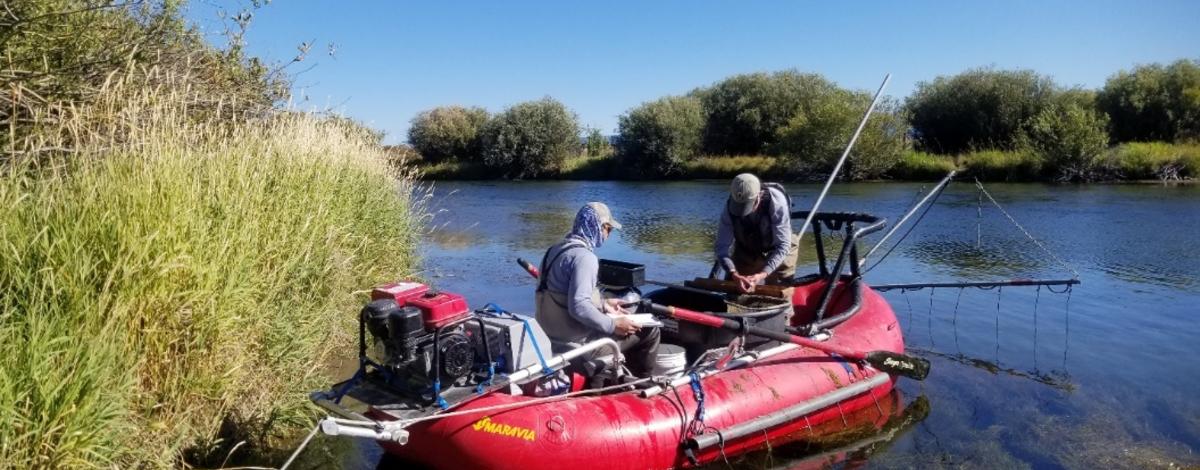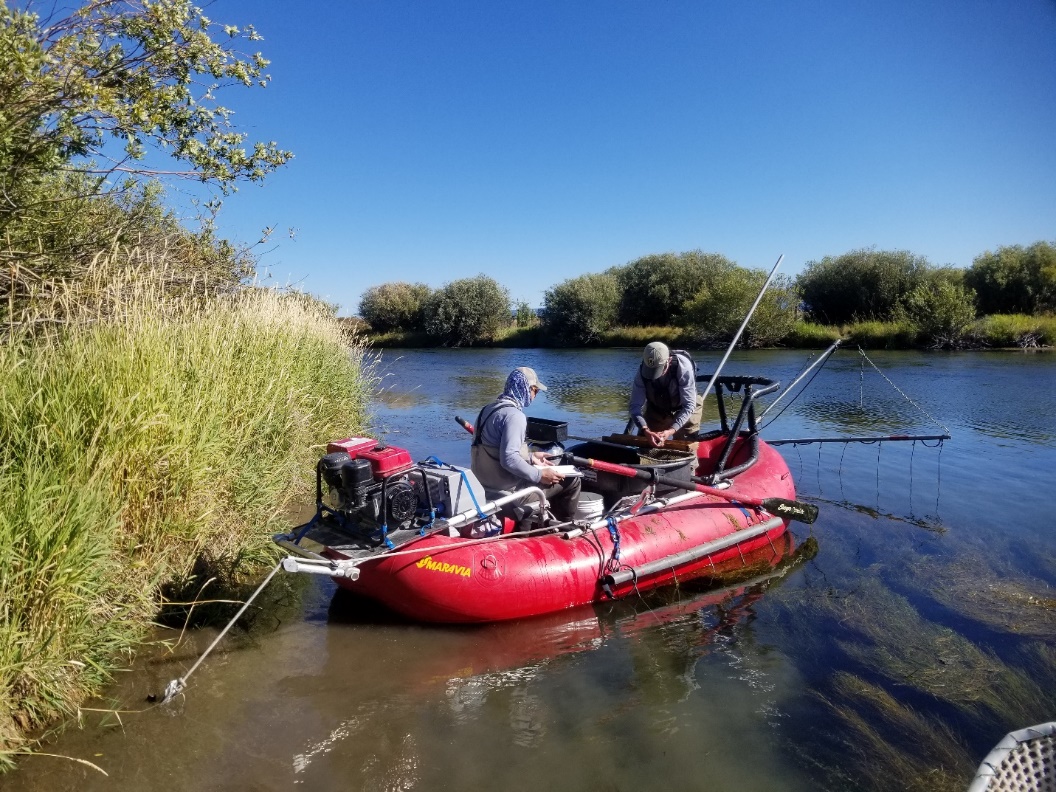
This September Fish and Game along with staff from the Friends of the Teton River conducted fish population surveys using mark/recapture on two monitoring reaches on the Teton River. These surveys are conducted every other year and provide valuable information to help guide fisheries management decisions. For example, the daily bag limit for rainbow trout in the Teton River was recently changed to an unlimited daily harvest in response to increasing numbers of rainbow trout in the river. Fisheries managers hope to use increased harvest of the non-native rainbows to benefit the native Yellowstone cutthroat trout population. Counting fish numbers at specific locations and at regular intervals allows Fish and Game to track changes in the populations through time. This is valuable information for making informed management decisions. The two sites that Fish and Game monitors regularly in Teton Valley are; the Nickerson Reach (near Teton Creek), and the Breckenridge Reach (near Packsaddle Bridge).
Nickerson Reach
The Nickerson monitoring reach begins just below the confluence of Teton Creek and is 3.45 miles in length. Each survey monitors the populations of Yellowstone cutthroat, rainbow and brook trout. This year's population estimate showed 697 Yellowstone cutthroat trout per mile which is similar to the 2017 estimate of 704 cutthroat per mile. The 10 year average of Yellowstone cutthroat trout in this stretch is 561 per mile (Figure 1). Rainbow trout abundances have decreased over the last two surveys to an estimated 526 rainbows per mile for 2019. The 10 year average for rainbow trout is 736 per mile. Brook trout followed the same downward trend as rainbow trout with an estimated abundance of 1,603 per mile which is lower than the last two surveys, but higher than the ten year average of 1,351 per mile. Overall these trends indicate a slight decline in all three trout species.
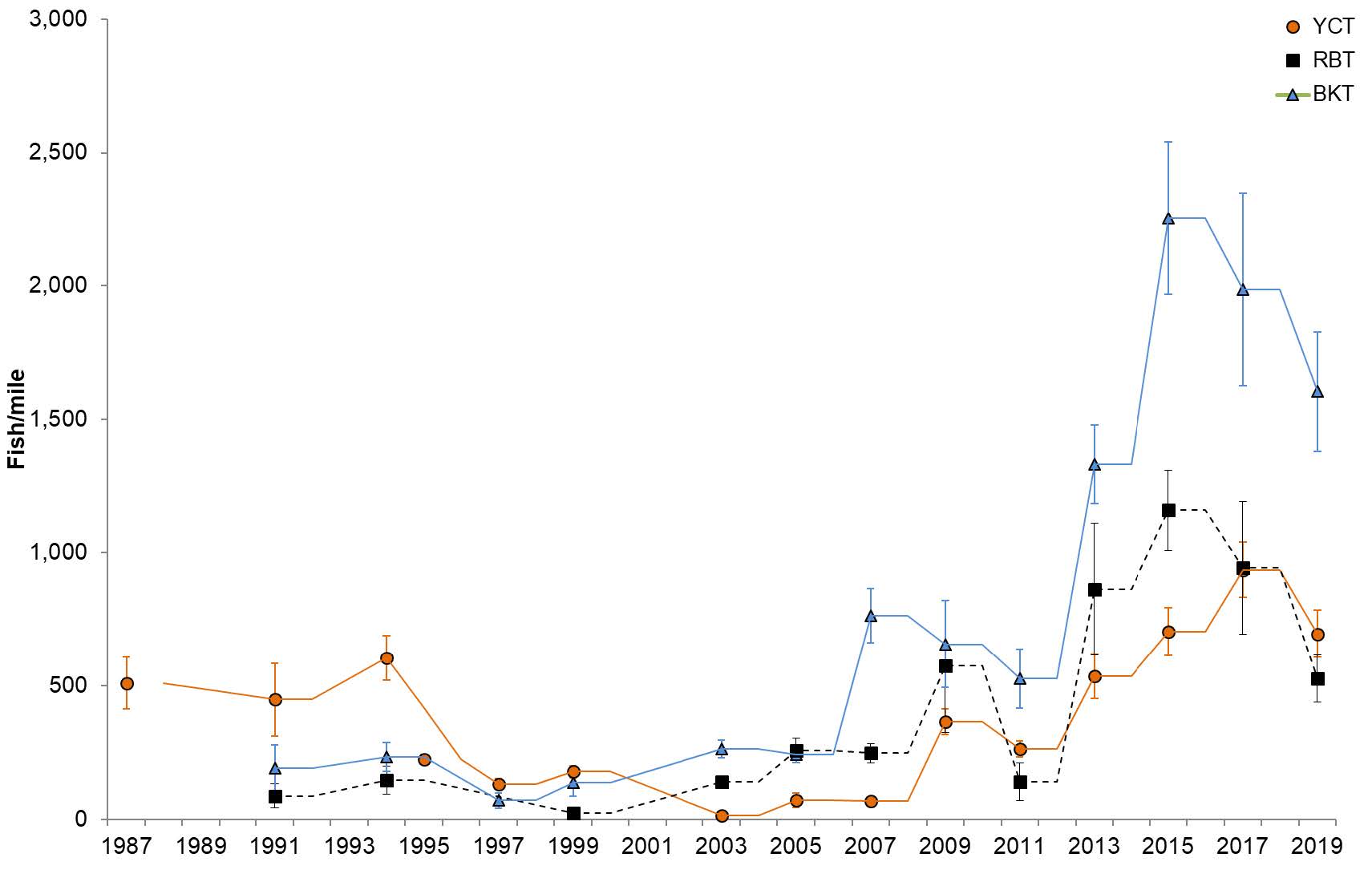
Figure 1. Abundance estimates and 95% confidence intervals from 1987 through 2019 for trout in the Nickerson monitoring reach, Teton River. YCT = Yellowstone Cutthroat Trout, RBT = Rainbow Trout, and BKT = Brook Trout.
The graph below shows the distribution of rainbow trout by total length in inches. All age classes were well represented indicating a healthy well distributed population of rainbow trout (Figure 2).
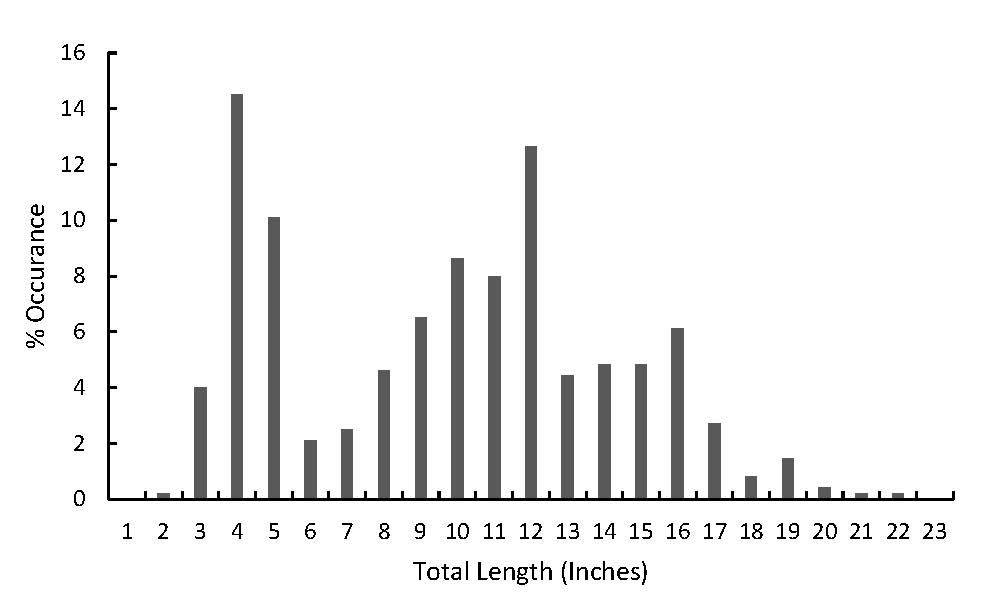
Figure 2. Precent of Rainbow Trout catch by total length (inches) in the Nickerson monitoring reach of the Teton River for 2019.
Breckenridge Reach
The Breckenridge Reach begins just below the Packsaddle/Cache bridge and ends ~3 miles upstream of Harrops bridge. The site is approximately 3.3 miles long. This reach was monitored for Yellowstone cutthroat, rainbow, brook and brown trout.
The abundance of Yellowstone cutthroat trout in this reach is similar to our estimates conducted over the last eight survey years (Figure 3). Estimates showed 67 cutthroat per mile in 2019. The 10 year average is 31 cutthroat per mile. Rainbow trout abundances have decreased over the last three surveys to the 2019 estimate of 802 rainbows per mile which is also lower than the 10 year average of 1,257 rainbows per mile. Estimated abundance of brook trout came in at 673 per mile which is slightly lower than the 2017 estimate of 886 per mile. The 10 year average of brook trout is 549 per mile. Brown trout have been observed in the Breckenridge Reach surveys since 2007. Between 2007 and 2013 low numbers (one to seven fish) of brown trout were detected. Since 2013 brown trout catch increased to 28, 32 and 145 respectively during the 2015, 2017 and 2019 surveys. This indicates a change in the trout species composition for this reach. The increased numbers of brown trout raises a concern for managers as brown trout have been know to displace other trout species in western waters. Currently, Teton River habitat conditions within the Teton Valley are likely favorable to brown trout. Increased brown trout populations in Teton Valley could negatively affect other trout species currently residing in the river and may change the nature of this popular fishery.
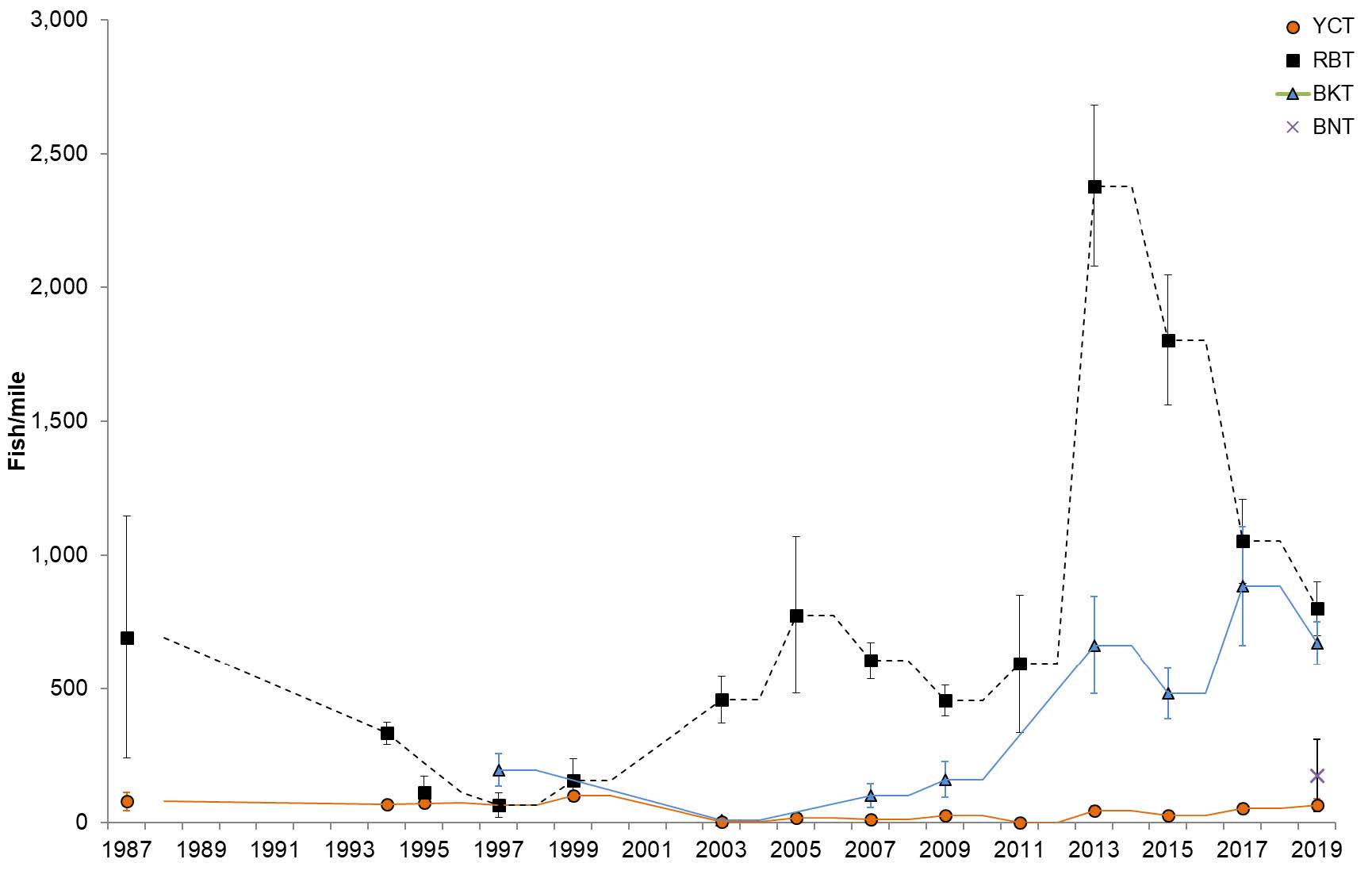
Figure 3. Abundance estimates and 95% confidence intervals from 1987 through 2019 for trout in the Breckenridge monitoring reach, Teton River. YCT = Yellowstone Cutthroat Trout, RBT = Rainbow Trout, BKT = Brook Trout, and BNT = Brown Trout.
Over the last three survey years the percentage of catch has increased for brook trout and brown trout, decreased for rainbow trout and stayed relatively the same for the Yellowstone cutthroat trout catch (Table 1).
Table 1. The precentage of catch per species for the 2015, 2017 and 2019 in the Breckenridge Reach, Teton River where YCT = Yellowstone Cutthroat Trout, RBT = Rainbow Trout, BKT = Brook Trout, and BNT = Brown Trout.



